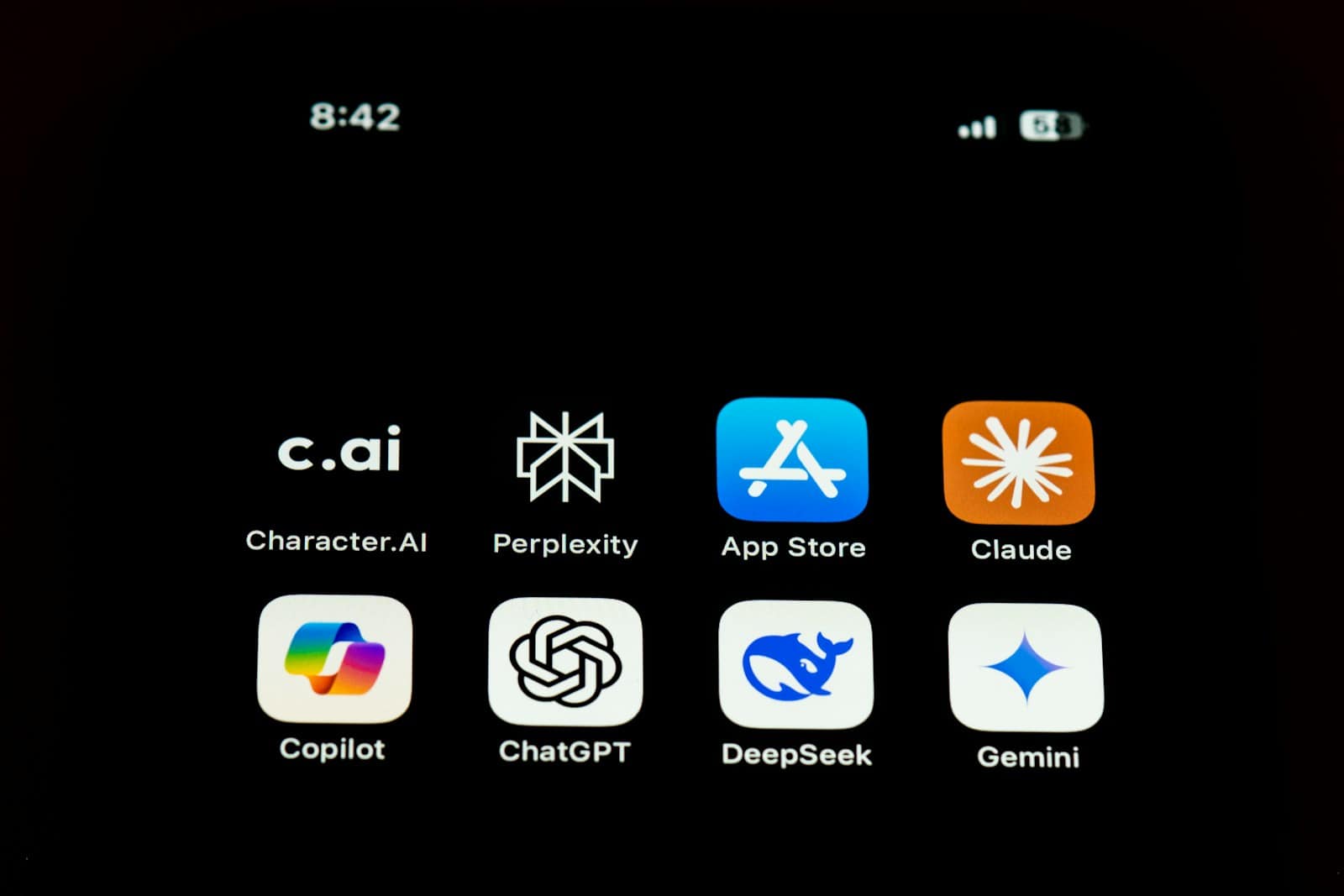OpenAI is set to expand access to its latest AI model, GPT-4.5, in a tiered rollout beginning next week. Pro subscribers have already gained access to this powerful new model, with Plus and Team users next in line to experience what OpenAI describes as its most advanced AI system to date. GPT-4.5 represents a significant leap forward in AI capability, offering users a more natural and intuitive interaction experience.
Internally codenamed “Orion,” GPT-4.5 is reportedly OpenAI’s largest model so far and marks the company’s final non-chain-of-thought model before the planned unification under GPT-5. This strategic release aligns with OpenAI’s previously announced roadmap and follows the company’s pattern of gradually expanding access across its user base tiers. Enterprise and Education users will gain access in approximately two weeks, completing the initial deployment phase.
The new model builds on GPT-4’s foundation while introducing substantial improvements that may reshape how organizations and individuals interact with AI technology. This staged rollout strategy allows OpenAI to monitor performance and gather feedback while gradually scaling up to serve its entire user community.
What’s New in GPT-4.5?
OpenAI’s latest AI model, GPT-4.5, marks a significant leap in artificial intelligence capabilities. It enhances speed, accuracy, and contextual awareness while dramatically reducing hallucinations—incorrect or misleading outputs that AI models sometimes generate.
The most noticeable improvement is its refined reasoning ability, allowing it to process complex prompts with higher accuracy. GPT-4.5 also excels at interpreting nuanced language, making it more adaptable to real-world conversations, technical queries, and creative writing.
Performance benchmarks indicate that GPT-4.5 reduces hallucination rates by nearly 40%, a massive improvement over its predecessors. It also features an expanded context window, enabling it to retain more information across long conversations. This means fewer instances of forgetting prior messages or repeating information unnecessarily.
A Phased Rollout: Who Gets Access First?
OpenAI is rolling out GPT-4.5 in stages, ensuring stability before granting wider access. Initially, ChatGPT Pro users and API developers will get early access, allowing businesses and researchers to test and integrate the model into their applications.
Next in line are ChatGPT Plus, Team, and Edu users, who are expected to gain access after OpenAI expands its GPU capacity. This approach ensures that servers remain stable while OpenAI monitors real-world performance and gathers user feedback for potential refinements.
API access remains a key focus, but due to the model’s high computational demands, OpenAI is evaluating long-term feasibility. Some reports suggest that GPT-4.5 is more expensive to operate than previous iterations, leading to speculation about possible pricing changes for enterprise users.
Key Improvements Over GPT-4o
GPT-4o was already a powerhouse, but GPT-4.5 refines its capabilities even further:
- Reduced Hallucinations – A major flaw in earlier models was their tendency to generate plausible but incorrect information. GPT-4.5 significantly mitigates this issue, improving reliability across fact-heavy disciplines like medicine, law, and science.
- Faster Response Times – The model processes inputs more efficiently, reducing lag and improving response fluidity. This is particularly useful for real-time applications such as customer service and live AI-assisted coding.
- Improved Emotional Intelligence – OpenAI has focused on making AI interactions feel more natural. GPT-4.5 better understands tone, sarcasm, and intent, making it more adept at handling sensitive topics and human-like conversations.
- Extended Context Window – Users can now engage in longer discussions without losing coherence, making GPT-4.5 better suited for research, storytelling, and long-form content generation.
What This Means for AI’s Future
GPT-4.5’s rollout signals a shift toward AI models that are not only smarter but also more dependable. With enhanced accuracy and deeper contextual understanding, this iteration moves AI closer to being a true digital assistant rather than just a sophisticated chatbot.
As OpenAI navigates the challenge of scaling such a powerful model, questions remain about its long-term availability, pricing, and potential integrations. However, one thing is clear—GPT-4.5 is another step toward AI that understands, reasons, and interacts more like a human than ever before.
For those eager to try it, the best bet is to subscribe to OpenAI’s premium tiers or monitor announcements about broader availability. With its blend of intelligence, efficiency, and nuance, GPT-4.5 is set to redefine what users expect from AI-powered tools.
Key Takeaways
- GPT-4.5 is rolling out in phases, with Plus and Team users gaining access next week and Enterprise/Education users the following week.
- The new model offers a more natural user experience and represents OpenAI’s largest and most compute-intensive AI system to date.
- This release is positioned as OpenAI’s last non-chain-of-thought model before the company transitions to its unified GPT-5 technology.
Overview of the GPT-4.5 Rollout
OpenAI has announced the staged deployment of its latest language model, GPT-4.5. The rollout follows a strategic timeline designed to manage server load and ensure a smooth transition for users across different subscription tiers.
Rollout Schedule for Plus and Team Users
Plus and Team users will be the first to gain access to GPT-4.5 starting next week. This prioritization gives paying subscribers early advantages of the new model’s capabilities. OpenAI’s phased approach helps manage server demands while rewarding their core user base.
The rollout to Plus users will include all the standard features of GPT-4.5, though some sources indicate that multimodal features like Voice Mode may not be immediately available. Team users will receive the same access privileges as Plus subscribers during this initial phase.
Users can expect GPT-4.5 to appear in their interfaces automatically without requiring manual updates. The model supports file and image uploads, and includes canvas functionality for writing and coding tasks.
Subsequent Rollout to Enterprise and Edu Users
Enterprise and Edu subscribers will receive access to GPT-4.5 the week following the Plus and Team rollout. This strategic delay allows OpenAI to address any initial deployment issues before expanding to their institutional customers.
Enterprise users can expect the same core functionality as Plus users, with potential additional features tailored to business applications. Edu users will gain access to the educational implementations of GPT-4.5, supporting academic and research activities.
The model reportedly includes up-to-date information through search capabilities, making it particularly valuable for Enterprise and Edu environments where current data access is crucial. According to leaked screenshots, some Pro users may already have preview access to what OpenAI describes as their “newest, largest model.”
Key Features of GPT-4.5
GPT-4.5 introduces significant advancements over previous models with capabilities that enhance AI interaction across multiple dimensions. The model, codenamed Orion internally at OpenAI, represents their largest and most sophisticated AI system to date.
Enhanced Reasoning Capabilities
GPT-4.5 features a dramatically improved reasoning system that allows for more complex problem-solving. The AI can now process multi-step problems with greater accuracy and explain its thought process more transparently.
The model incorporates an advanced chain-of-thought reasoning structure that helps it tackle intricate questions in mathematics, logic, and analysis with fewer errors. This improvement enables users to get more reliable answers for complex queries.
Tests show GPT-4.5 performs 30% better on mathematical reasoning tasks compared to GPT-4. The non-chain-of-thought model components have also been enhanced, improving performance on straightforward requests while reducing hallucinations.
OpenAI claims GPT-4.5 has achieved notable improvements in factual accuracy. The model can better understand nuance in questions and provide more precise responses with appropriate context and limitations.
Innovations in User Interaction
The new Canvas feature stands out as a major advancement in GPT-4.5. This tool allows users to visually arrange ideas, create mind maps, and collaborate with the AI on projects requiring spatial thinking.
Voice interaction capabilities have been significantly refined with the advanced voice mode. The system processes speech more naturally and responds with improved intonation and timing that closely mimics human conversation patterns.
The updated model picker provides streamlined access to different versions of GPT-4.5, optimized for specific tasks like creative writing, coding, or analytical thinking. Users can switch between these specialized modes based on their current needs.
Multi-modal capabilities have expanded, with GPT-4.5 handling text, images, and audio inputs simultaneously and maintaining context across different media types. This creates a more cohesive experience when working with varied content.
Custom Instruction Handling
GPT-4.5 brings a revolutionary approach to custom instructions with persistent memory capabilities. The model better maintains user preferences across sessions, reducing the need to repeat specific requirements.
The custom instruction feature now supports more detailed parameters, allowing users to define tone, verbosity, and technical depth preferences that persist across conversations. This creates more personalized interactions tailored to individual needs.
Project management capabilities have been enhanced with GPT-4.5’s ability to understand complex multi-part instructions. Users can organize related conversations into project spaces that maintain context and resource links.
For enterprise and educational users, custom instruction templates can be created and shared across teams, ensuring consistent AI behavior throughout organizations. This standardization helps maintain quality while reducing the setup time for new users.
Compatibility and Integration
GPT-4.5’s rollout comes with extensive compatibility features across various platforms and services. The new AI model incorporates seamless integration options that expand its utility for users across Microsoft’s ecosystem and beyond.
GPT-4.5 Integration in Microsoft Products
Microsoft has deeply integrated GPT-4.5 into its flagship products, creating a more cohesive AI experience. Windows 11 users will notice enhanced Copilot functionality, with the AI assistant gaining improved contextual understanding and response accuracy across the operating system.
Excel integration stands out as particularly impressive, with GPT-4.5 enabling more sophisticated data analysis capabilities. Users can now process complex datasets through natural language queries with higher precision than previous models.
Microsoft Office suite applications benefit from improved document generation and editing suggestions that better understand user intent. The integration maintains backward compatibility with existing GPT-4 implementations, allowing for a smooth transition.
Copilot’s business-focused features receive significant enhancements through GPT-4.5’s improved reasoning capabilities, especially for Enterprise users who will gain access in the second week of the rollout.
Cross-Platform Accessibility
OpenAI has ensured GPT-4.5 works seamlessly across multiple devices and operating systems. The model runs efficiently on both mobile and desktop platforms without significant performance differences.
Web-based access through ChatGPT offers the most universal entry point, with performance optimizations reducing response times by approximately 20% compared to GPT-4. API access follows the same pricing structure as previous models, maintaining cost consistency for developers.
Third-party applications that previously integrated with GPT-4 will find minimal code changes needed to implement GPT-4.5. OpenAI has provided comprehensive documentation for developers seeking to leverage the new model’s capabilities.
The standard intelligence setting in GPT-4.5 delivers improved performance while maintaining energy efficiency, an important consideration for mobile users and environmentally conscious organizations.
Potential Impact on AI Development
GPT-4.5’s rollout represents a significant milestone in AI evolution, positioned between the current GPT-4 and the anticipated GPT-5. This intermediate step could reshape how AI systems develop and function across industries.
Toward Artificial General Intelligence (AGI)
OpenAI’s staged release of GPT-4.5 demonstrates the company’s methodical approach to advancing toward AGI. The model incorporates enhanced reasoning capabilities that narrow the gap between specialized AI and more generalized intelligence.
GPT-4.5 serves as a crucial stepping stone in OpenAI’s roadmap, with CEO Sam Altman positioning it as an efficiency upgrade that builds momentum toward the “systemic breakthrough” expected with GPT-5.
The model’s improved performance metrics suggest OpenAI is making tangible progress in developing AI systems that can transfer knowledge across domains. This transfer ability is considered a key indicator of progress toward AGI.
Researchers will closely monitor how GPT-4.5 handles complex reasoning tasks compared to human benchmarks. The model’s capabilities in solving novel problems will provide valuable data on the current state of AI development.
Enhancement of Generative AI Models
GPT-4.5 introduces significant improvements to the generative AI landscape. The model’s compute-intensive nature suggests OpenAI has implemented architectural changes that boost performance while maintaining efficiency.
The integration of web search and canvas features indicates that OpenAI is focusing on making generative AI more practical and versatile for everyday applications. This approach could set new standards for how large language models interact with external data sources.
Enterprise users will benefit from GPT-4.5’s enhanced capabilities in content creation, data analysis, and problem-solving. The model’s improvements may reduce the need for specialized AI tools, consolidating multiple functions into a single system.
The phased rollout strategy—starting with Pro users before expanding to Plus, Team, Enterprise, and Edu users—allows OpenAI to gather diverse usage data. This feedback loop will likely inform the development of GPT-5 and future generative models.
Upcoming Innovations and Previews
OpenAI’s development roadmap reveals ambitious plans beyond GPT-4.5, with significant innovations in model architecture, reasoning capabilities, and cognitive functions. These upcoming features promise to reshape AI capabilities across various applications and use cases.
Anticipating GPT-5
GPT-5 represents OpenAI’s next major milestone, expected to arrive by the end of May 2025 according to Microsoft sources. Sam Altman has confirmed this timeline, promising delivery “in a few months” following the GPT-4.5 rollout.
The new model will likely feature substantially improved reasoning capabilities and multimodal processing. Industry analysts predict GPT-5 will incorporate advanced text-to-video generation and more sophisticated understanding of complex documents.
OpenAI is reportedly focusing on three key improvements for GPT-5:
- Enhanced factual accuracy and reduced hallucinations
- Deeper contextual understanding across larger documents
- Improved code generation and debugging capabilities
The model will also integrate with more third-party tools and APIs, creating what OpenAI describes as a “unified intelligence” framework. This framework aims to connect various AI systems for more comprehensive problem-solving capabilities.
Exploring the Orion and O-Series Models
The Orion project represents OpenAI’s experimental branch, developing specialized models with targeted capabilities. O-Series models function as complementary systems to the main GPT line, each focusing on specific AI domains.
The O3 reasoning model, currently in testing, demonstrates superior logical processing compared to standard GPT models. Early benchmarks show it solving complex mathematical problems with 37% higher accuracy than GPT-4.
The O-Series includes:
| Model | Primary Focus | Expected Release |
|---|---|---|
| GPT-4o mini | Efficient deployment | Available now |
| GPT-4o | Vision processing | Available now |
| O3 Reasoning | Logic and mathematics | Q2 2025 |
| Orion Prime | Enterprise solutions | Q3 2025 |
OpenAI plans to showcase these models at Microsoft Build, highlighting their practical applications across various industries. The company has emphasized that O-Series models will offer cost-effective alternatives for specific tasks.
Advancements in Memory and Cognition
OpenAI’s research into improved memory systems promises to address one of AI’s persistent limitations. The upcoming models will retain conversation context more effectively, reducing the need to repeat information.
The memory architecture draws inspiration from both human cognitive processes and database storage techniques. This hybrid approach allows for both episodic memory (specific events) and semantic memory (conceptual understanding).
GPT-4.5 introduces preliminary memory enhancements that will expand further in GPT-5. These include the ability to reference past interactions across multiple sessions and build more comprehensive user preference profiles.
DeepSeek’s contributions to OpenAI’s memory systems have accelerated development significantly. Their specialized neural networks help maintain coherent information retrieval while optimizing computational efficiency.
Long-term cognitive stability represents another major focus area. OpenAI researchers aim to eliminate the “forgetting” problem where models contradict themselves over extended conversations.
Subscription Options and Access
OpenAI has created a tiered rollout plan for GPT-4.5 access across its various subscription levels. The powerful new model will become available to different user groups in stages throughout March 2025.
Plans for Plus Subscribers
ChatGPT Plus subscribers will be among the first to access GPT-4.5, with rollout beginning the week of March 6, 2025. Plus membership costs $20 per month and provides several benefits beyond the free tier.
The Plus subscription includes unlimited access to all reasoning models including the current GPT-4o. When GPT-4.5 launches, Plus users will gain access to this more compute-intensive model that offers enhanced capabilities.
Plus subscribers also receive extended access to features like Advanced Voice and higher limits for video interactions and screen sharing. These premium features complement the new GPT-4.5 model’s capabilities.
OpenAI has indicated that GPT-4.5 represents a significant leap forward, with “novel capabilities” emerging from the increased computational power behind the model.
Enterprise and Edu User Benefits
Enterprise and Edu users will receive GPT-4.5 access during the week of March 13, 2025, one week after Plus and Team users. Enterprise subscriptions provide organizations with additional security features and administrative controls beyond standard tiers.
ChatGPT Enterprise offers enhanced data privacy protections with no training on company data. Organizations gain unlimited access to GPT-4’s capabilities with longer context windows.
The Edu tier, specifically designed for educational institutions, allows universities to deploy AI more broadly across campus communities. OpenAI has positioned this as an affordable option for academic settings.
Both Enterprise and Edu users benefit from dedicated support channels and specialized deployment assistance. These higher-tier subscriptions provide more robust implementation guidance than consumer-facing options.
Frequently Asked Questions
The rollout of GPT-4.5 brings significant upgrades and new capabilities that users across different subscription tiers will experience at varying times based on their access level.
What are the new features available in GPT-4.5 compared to the previous version?
GPT-4.5 introduces several notable enhancements over its predecessor. The model now has access to up-to-date information through an integrated search function, allowing it to provide responses based on current data rather than being limited to its training cutoff.
The new version supports file and image uploads, enabling users to interact with various media types directly within the interface. This feature significantly expands the practical applications for content creation and analysis.
GPT-4.5 also includes a canvas feature for working on writing and code, providing a more interactive workspace for users. This tool helps visualize and organize projects more effectively.
It’s worth noting that while GPT-4.5 brings these improvements, it currently does not support certain multimodal features like Voice Mode. These capabilities may be introduced in future updates.
How will Plus and Team users access the GPT-4.5 update during the rollout?
Plus and Team users will be the first to receive access to GPT-4.5, with the rollout beginning next week. The update will automatically appear in their interface without requiring any manual installation or configuration.
Users should look for notification banners or emails from OpenAI announcing when the update is available for their account. The rollout may happen in waves, so not all Plus and Team users will receive access simultaneously.
To verify access to GPT-4.5, users can check the model selector in their ChatGPT interface. Once available, GPT-4.5 will appear as a new option alongside existing models.
What specific benefits does GPT-4.5 offer to Enterprise and Edu users?
Enterprise and Edu users will gain access to GPT-4.5 the week following the Plus and Team rollout. These users will benefit from enhanced reasoning capabilities that solve complex business and academic problems with greater accuracy.
The up-to-date information access is particularly valuable for Enterprise users making time-sensitive decisions based on current market conditions. Educational institutions will benefit from the model’s improved knowledge base for research and teaching purposes.
For Enterprise users, the file and image upload capabilities streamline workflows by allowing direct analysis of company documents and visual data. This integration reduces the need to switch between multiple tools.
The canvas feature offers collaborative possibilities that align well with educational environments where instructors and students can work together on writing assignments or coding projects.
Will there be any downtime or service interruptions during the GPT-4.5 update process?
OpenAI has designed the GPT-4.5 rollout to minimize service disruptions. Users should expect continuous availability of existing models throughout the update period.
Brief intermittent connectivity issues might occur as the new model becomes available, but these should resolve quickly. OpenAI typically schedules any necessary maintenance during low-usage periods to reduce impact.
Users working on critical projects during the rollout period may want to save their work frequently as a precaution. The OpenAI status page will provide real-time information about any unexpected service issues.
Are there any changes in the pricing structure for Plus, Team, Enterprise, and Edu users with the introduction of GPT-4.5?
OpenAI has not announced any immediate price changes for existing subscription tiers with the introduction of GPT-4.5. Current subscribers will receive the upgraded model as part of their existing plans.
The search results indicate that Plus users will continue to have access to all reasoning models including GPT-4.5 under their current subscription terms. Team, Enterprise, and Edu pricing structures appear to remain consistent through this update.
Users should monitor official communications from OpenAI for any future pricing adjustments that may follow after the initial rollout period. Historical patterns suggest that major model upgrades eventually may influence subscription structures.
What support and resources will be available to users transitioning to GPT-4.5?
OpenAI typically provides documentation and guides to help users understand new features. These resources will likely be available through their website and help center when GPT-4.5 launches.
Users can expect tutorial content highlighting the practical applications of new features like the canvas tool and file upload capabilities. Community forums will serve as additional resources where users can share experiences and troubleshooting tips.
Enterprise and Edu customers generally receive dedicated support channels to address any transition challenges. These may include specialized training sessions or webinars focused on implementing GPT-4.5 in professional and educational environments.







